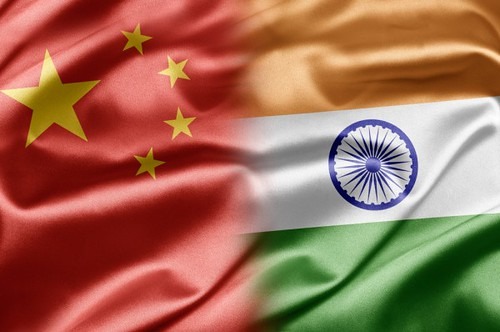Gauging Exposure to FET Violations of Chinese Investment Treaty in India

Introduction
In April 2020, India’s Ministry of Commerce issued Press Note No. 3[1], altering FDI policy to curb opportunistic takeovers during the COVID-19 pandemic. The policy aimed to restrict investments from neighboring countries, requiring government approval. Responding to border tensions, India banned 59 Chinese apps in June 2020[2], later adding 43 more. In October 2018, India terminated the India-China Bilateral Investment Treaty[3], yet it remains legally binding for 15 years, allowing Chinese investments to retain Investor-State Dispute Settlement protection against treaty breaches.
Table of Contents
China’s Potential Contention
In the present situation, India is claiming two things: 1) That restrictions on FDI Investments are to curb the economic instability caused by the Pandemic and it’s a countermeasure to save India from hostile takeovers & 2) That the Chinese applications have breached Section 69A of the IT Act,[4] which affects the sovereignty of the nation. However, the bans were not imposed as per the procedure laid down in the website blocking rules of 2009[5]. It is established that China enjoys the protection of the BIT Treaty as well as the customary laws.
- Fair & Equitable Treatment-
Article 3 of the India-China BIT lacks an agreed interpretive standard for the FET clause[6]. India aligns with the International Minimum Standard (IMS) over a higher threshold than FET, which was affirmed in Joint Interpretive Statements for BITs and Neer v. Mexico[7]. This restricts FET standards to the minimum customary treatment to protect the investor’s legitimate expectations & coercion from govt., which was originally highlighted in Tecmed v. Mexico[8].
- Expropriation-
The expropriation clause laid down under Article 5 of the India-China BIT[9], highlights a promise from the host state to avoid the depravation of the contracting party’s investor of their investment or to introduce any measures that would harm the value of the contracting party’s investment. In such claims, the tribunals tend to generally look at the severity of the actions of the host state to gauge whether the expropriation has happened or not. Banning 57 applications without due process can likely be considered severe.
Worsened Situation On The FDI Front
Despite India approving only 80 FDI proposals from China by June 2022 out of 382 received post-PN3, uncertainties persist. Furthermore, the Government has also amended the Chartered Accountants, the Costs and Works Accountants, and the Company Secretaries (Amendment) Bill, to enhance accountability. These trade restrictions have led to a decrease in investments coming from China from 360 million USD to 200 million USD.
ECB Route
The maximum amount of ECB that can be raised by an Indian company is USD 750 million or equivalent in a financial year. ECB transactions are subject to all-in-cost ceilings, and the all-in-cost ceiling for ECBs denominated in US dollars is 450 basis points above the six-month London Interbank Offered Rate (LIBOR). The RBI has placed certain restrictions on Chinese companies for investing in India, including the requirement of prior approval from the RBI for all investments made by Chinese entities, including ECBs.
India’s Defence
The Indian government has defended Press Note No. 3 (PN3) of the FDI policy, stating that it does not impact goods trade and does not fall within the illustrative list of Trade Related Investment Measures (TRIMs) under the WTO commitment. The move does not automatically result in any cap on equity or impose any restriction. Officials argue that India has not violated any Bilateral Investment Treaties (BITs) as the provisions only apply to investments made into India prior to the termination of the treaty, and no retrospective action was taken.
India can also claim that China had adopted policies restricting access to foreign investors in crucial sectors, aligning with legitimate public welfare objectives. India can also rely upon the Daniels vs. United Mexican State[10] where the tribunal had accepted the distinctions in treatment based on the plausible connection to legitimate public welfare objectives.
Conclusion
India’s restrictions on Chinese investments, supported by nations like Australia and the US, aim to curb outward capital flows. Yet, potential prolonged and costly treaty arbitrations necessitate international collaboration to address looming threats from Bilateral Investment Treaty-related claims, fostering a balanced global economic environment.
[1] https://pib.gov.in/PressReleseDetailm.aspx?PRID=1635206.
[2] https://pib.gov.in/PressReleseDetailm.aspx?PRID=1635206.
[3] https://investmentpolicy.unctad.org/international-investment-agreements/treaties/bit/912/china—india-bit-2006-.
[4] https://www.meity.gov.in/writereaddata/files/act2000_0.pdf.
[5]https://www.meity.gov.in/writereaddata/files/Information%20Technology%20%28%20Procedure%20and%20safeguards%20for%20blocking%20for%20access%20of%20information%20by%20public%29%20Rules%2C%202009.pdf.
[6] https://www.mfat.govt.nz/assets/Trans-Pacific-Partnership/Other-documents/Interpretation-of-In-Like-Circumstances.pdf.
[7] L.F.H. Neer and Pauline Neer v. United Mexican States, 4 R.I.A.A. 60-66 (Oct. 15, 1926).
[8] Tecnicas Medioambientales Tecmed S.A v. The United Mexican States, ICSID Case No. ARB(AF)/00/2, Decision on Jurisdiction, ¶ 154 (May 29, 2003).
[9] https://investmentpolicy.unctad.org/international-investment-agreements/treaty-files/742/download.
[10] Archer Daniels Midland Company and Tate & Lyle Ingredients Americas, Inc. v. The United Mexican States, ICSID Case No. ARB(AF)/04/05, Decision on Jurisdiction (Nov. 21, 2007).
King Stubb & Kasiva,
Advocates & Attorneys
New Delhi | Mumbai | Bangalore | Chennai | Hyderabad | Mangalore | Pune | Kochi
Tel: +91 11 41032969 | Email: info@ksandk.com
By entering the email address you agree to our Privacy Policy.